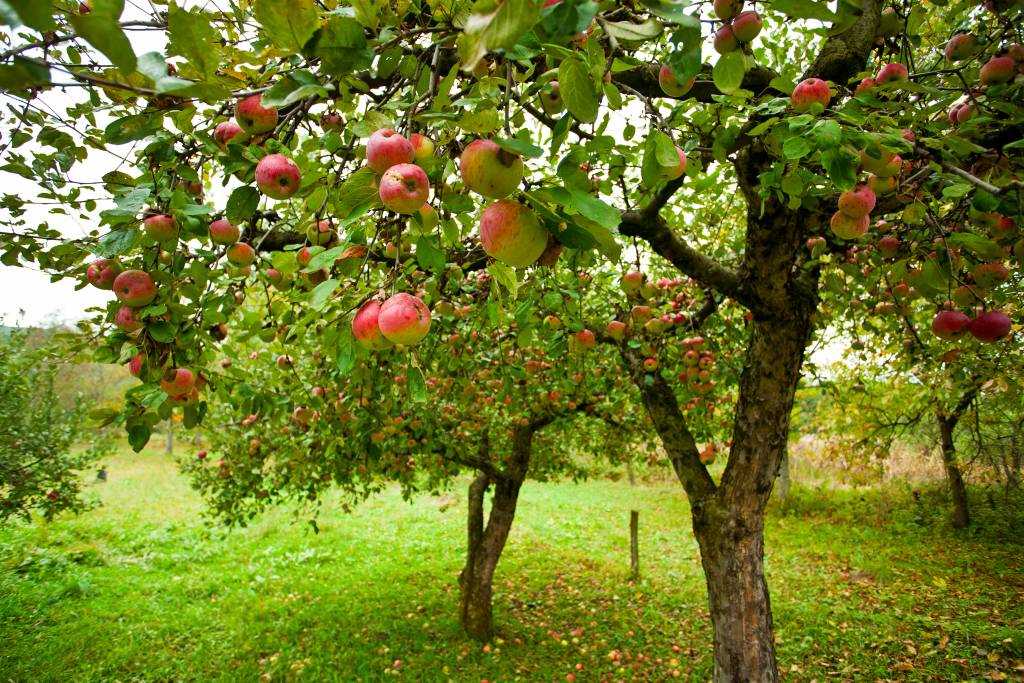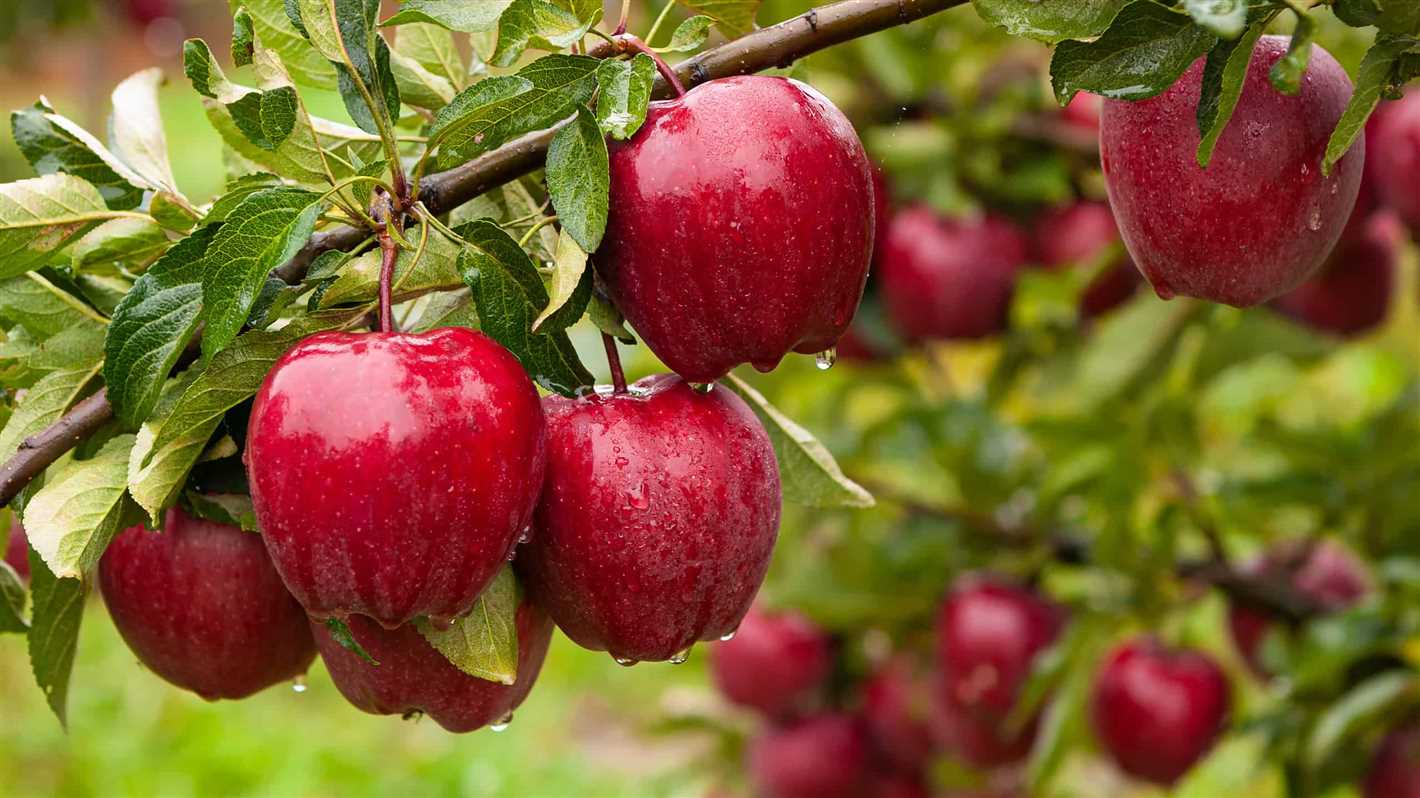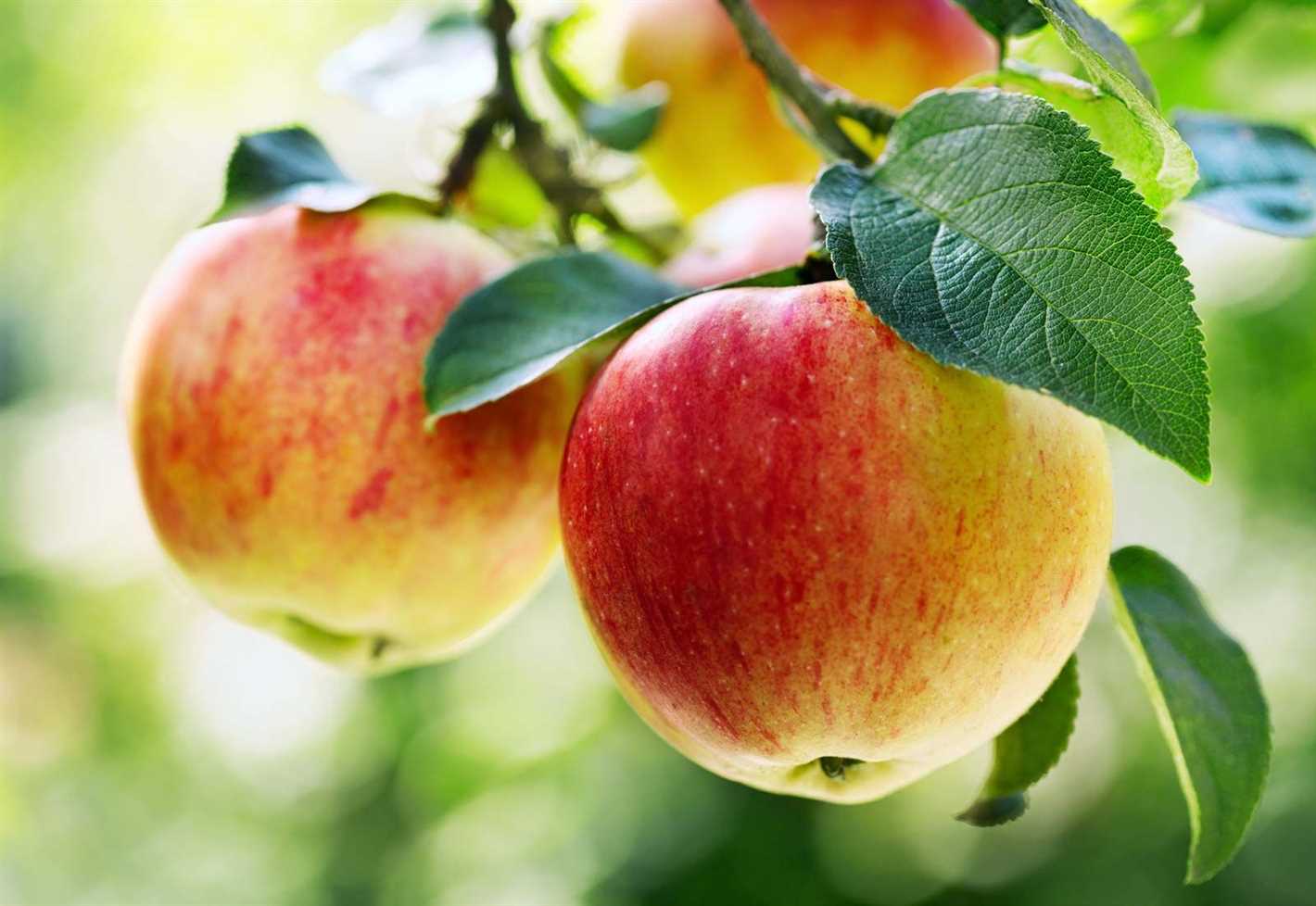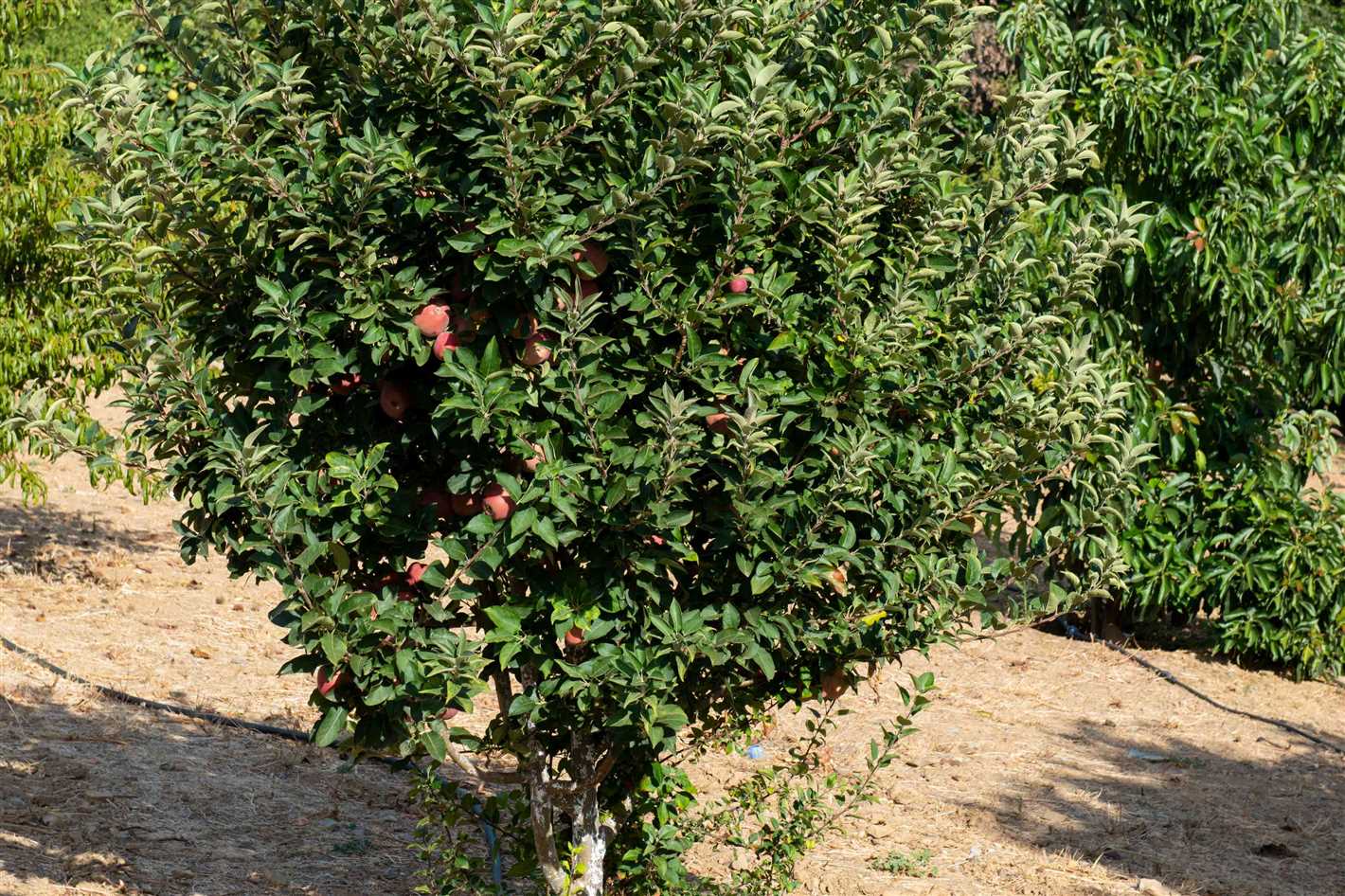- Reasons Apple Trees Fail to Bear Fruit
- 1. Poor Pollination
- 2. Lack of Sunlight
- 3. Insufficient Nutrients
- 4. Inadequate Pruning
- 5. Disease and Pest Problems
- 6. Improper Watering
- 7. Age of the Tree
- Lack of Proper Pollination
- Causes of Lack of Proper Pollination
- How to Fix Lack of Proper Pollination
- Inadequate Sunlight
- Poor Soil Conditions
- Improper Pruning Techniques
- Disease and Pest Infestation
- Disease
- Pest Infestation
- Inadequate Watering
- Age of the Tree
- Expert Advice to Fix These Issues
- 1. Poor Pollination
- 2. Insufficient Sunlight
- 3. Inadequate Nutrients
- 4. Improper Pruning
- 5. Disease and Pest Issues
- 6. Lack of Proper Watering
- 7. Age of the Tree
- Question-answer:
- Why is my apple tree not bearing any fruit?
- How can I improve pollination for my apple tree?
- Can lack of sunlight affect fruit production in apple trees?
- What are some common nutrient deficiencies that can affect apple trees?
- What are some common diseases that can prevent apple trees from bearing fruit?
- Why is my apple tree not bearing fruit even though it is several years old?
- Video: How Apples Bear Fruit and Where on the Tree, Tip v.s. Spur and Everything In Between
Are you frustrated with your apple tree not producing any fruit? You’ve waited patiently for several years, expected a bountiful harvest, only to be disappointed. Don’t worry; you’re not alone. Apple trees can be fickle, and there are several reasons why they may fail to bear fruit.
In this article, we’ll explore seven common reasons for non-fruiting apple trees and provide expert advice on how to fix each issue. By following these tips, you’ll increase your chances of enjoying a fruitful harvest in no time!
1. Age of the Tree: Apple trees need time to mature before they begin producing fruit. Most apple varieties start bearing fruit after three to five years of growth. If your tree is still young, it’s normal not to see any fruit yet. Patience is key; give it some more time.
2. Improper Pollination: Apple trees require cross-pollination to produce fruit effectively. If you only have one apple tree, chances are it’s not getting the necessary pollen from another tree. Consider planting a compatible apple variety nearby for proper pollination.
3. Lack of Pruning: Regular pruning is crucial for apple trees to remain healthy and encourage fruit production. Without proper pruning, apple trees can become overgrown and concentrate their energy on growing branches instead of producing fruit. Learn the correct pruning techniques or hire an expert to do it for you.
4. Insufficient Sunlight: Apple trees need full sunlight to thrive and bear fruit. If your tree is planted in a shady area, it might be the reason for the lack of fruit. Consider relocating the tree to a sunnier spot or trim nearby trees that obstruct sunlight.
5. Poor Soil Quality: The soil conditions play a significant role in the health and fruiting of apple trees. If your soil lacks essential nutrients or has pH imbalances, it can negatively affect fruit production. Test your soil and amend it accordingly with organic matter, fertilizers, or lime to achieve the optimal growing conditions.
6. Pest and Diseases: Apple trees are susceptible to various pests and diseases that can inhibit fruit production. Common culprits include aphids, apple maggots, fungal infections, and apple scab. Implement proper pest control measures, such as regular monitoring, spraying organic pesticides, and maintaining good tree hygiene, to prevent and manage these issues.
7. Weather Conditions: Extreme weather conditions, such as late frosts or hailstorms, can damage blossoms and young fruits, leading to reduced or no fruit set. Unfortunately, we can’t control the weather, but you can mitigate its impact by covering the tree during frosty nights or providing wind barriers.
By addressing these common issues affecting apple trees, you’ll increase the chances of your tree producing bountiful fruit. Remember, it takes time, effort, and proper care to enjoy a successful harvest. So, don’t give up on your tree just yet!
Reasons Apple Trees Fail to Bear Fruit
1. Poor Pollination


One common reason for apple trees failing to bear fruit is poor pollination. Apple trees generally need cross-pollination from another compatible apple variety to produce fruit. If there are no compatible trees nearby or if pollinating insects are scarce, the tree may not receive enough pollen to set fruit.
2. Lack of Sunlight
Apple trees require at least 6 hours of direct sunlight each day to produce fruit. If the tree is planted in a shaded area, it may not receive enough sunlight to develop and ripen the fruit properly.
3. Insufficient Nutrients
Apple trees need a balanced supply of nutrients, including nitrogen, phosphorus, and potassium, to support fruit production. If the soil is lacking in these nutrients or if there is an imbalance, the tree may struggle to produce fruit.
4. Inadequate Pruning
If apple trees are not pruned properly, they can become overcrowded with branches and foliage. This can result in poor air circulation and sunlight penetration, leading to reduced fruit production.
5. Disease and Pest Problems
Diseases and pests can significantly impact fruit production in apple trees. Common issues include apple scab, powdery mildew, aphids, and apple maggots. These problems can cause fruit drop, deformities, or make the tree too weak to produce fruit.
6. Improper Watering
Apple trees require regular watering, especially during periods of drought. If the tree does not receive enough water, it may go into survival mode and focus its energy on staying alive rather than producing fruit.
7. Age of the Tree
Young apple trees may take several years before they start bearing fruit. It is normal for a newly planted apple tree to take 3 to 5 years to produce a significant amount of fruit. However, if an older tree stops bearing fruit altogether, it may be a sign of declining health or poor maintenance.
In conclusion, there are several reasons why apple trees may fail to bear fruit. By addressing issues such as poor pollination, lack of sunlight, insufficient nutrients, inadequate pruning, disease and pest problems, improper watering, and considering the age of the tree, you can improve the chances of a successful apple harvest.
Lack of Proper Pollination
One of the main reasons apple trees fail to bear fruit is a lack of proper pollination. Apple trees are not self-pollinating, which means they require pollen from a different apple variety in order to produce fruit. If there are no other apple trees in the vicinity or if the pollinators are not effectively transferring pollen from one tree to another, the apple tree may not produce fruit.
Causes of Lack of Proper Pollination
- Insufficient Pollinators: If there are not enough bees or other pollinators in the area, the apple tree may not receive enough pollen for fruit set. This can occur due to the lack of suitable habitat, pesticide use, or other factors that reduce pollinator populations.
- Incorrect Pollinator Variety: Not all apple varieties are compatible for pollination. Each apple variety has a specific pollen compatibility group, and trees from different groups cannot effectively pollinate each other. If you have apple trees from different groups, it is important to ensure that there are pollinators from each group nearby.
- Pollen Timing: Apple trees have specific periods of peak pollen production and pollen receptivity. If the timing of the pollinator’s activity does not align with the apple tree’s period of receptivity, pollination may not occur. It is important to have pollinators active and nearby when the apple blossoms are open and ready for pollination.
How to Fix Lack of Proper Pollination
To fix a lack of proper pollination in apple trees, you can take the following steps:
- Plant Suitable Pollinator Varieties: Ensure that you have apple tree varieties from different compatibility groups nearby. This will increase the chances of successful cross-pollination.
- Attract Pollinators: Create a suitable habitat for bees and other pollinators by planting bee-friendly flowers, providing nesting sites, and avoiding the use of pesticides. This will help increase the population of pollinators in your area.
- Use Pollinator Attractants: Consider using attractants such as pheromone lures or flowering plants to attract and keep pollinators near your apple trees during the flowering period.
- Consider Hand Pollination: If the natural pollinators are not sufficient, you can hand-pollinate the apple blossoms. This can be done by transferring pollen from one tree to another using a small brush or cotton swab.
By addressing the lack of proper pollination in apple trees, you can greatly improve the chances of fruit production and enjoy a bountiful harvest.
Inadequate Sunlight
One of the main reasons why apple trees fail to bear fruit is inadequate sunlight. Apple trees require a minimum of 6 hours of direct sunlight per day to produce fruit. Without enough sunlight, the tree will not be able to photosynthesize effectively, resulting in a lack of energy to produce flowers and fruits.
Causes of inadequate sunlight:
- Shade from buildings or surrounding trees: If the apple tree is planted in an area with tall buildings or surrounded by dense trees, it may not receive enough direct sunlight throughout the day.
- Improper tree placement: Planting the apple tree in an area where it is shadowed by other structures or objects can also lead to inadequate sunlight.
- Overgrown vegetation: If the surrounding vegetation, such as bushes or weeds, becomes too overgrown, it can block the sunlight from reaching the apple tree.
How to fix inadequate sunlight:
- Prune surrounding trees or vegetation: Trimming or removing trees, bushes, or other vegetation that are casting shade on the apple tree can help increase the amount of sunlight it receives.
- Choose the right planting location: Prioritize planting the apple tree in a spot that receives full sun for at least 6 hours a day.
- Consider reflective surfaces: Placing reflective surfaces, such as white stones or aluminum foil, around the tree can help redirect sunlight towards it.
By addressing the issue of inadequate sunlight, you can give your apple tree the necessary conditions to thrive and bear fruit.
Poor Soil Conditions
Poor soil conditions can have a significant impact on the ability of apple trees to bear fruit. Here are some common soil-related problems and solutions:
- Imbalanced pH: Apple trees generally prefer a slightly acidic soil with a pH level between 6.0 and 7.0. If the pH level is too high or too low, it can affect nutrient uptake and plant growth. Test the soil pH and adjust it accordingly by applying amendments such as sulfur or lime.
- Compacted soil: Compacted soil can prevent the apple tree’s roots from accessing oxygen and water, leading to stunted growth. To fix this, aerate the soil using a garden fork or aeration tools. This will improve the soil structure and allow for better root development.
- Poor drainage: Excessively wet or poorly drained soil can prevent the roots from receiving enough oxygen, resulting in root rot and poor fruit production. Improve drainage by adding organic matter, such as compost, to the soil. Raised beds or mounds can also help improve drainage in areas with heavy clay soils.
- Lack of nutrients: Apple trees require a balanced supply of nutrients to thrive and produce fruit. Conduct a soil test to determine if any specific nutrient deficiencies exist. Based on the results, apply appropriate fertilizers or organic amendments to address the nutrient deficiencies.
- Soil contamination: Contaminated soil can adversely affect the health and productivity of apple trees. If the soil is contaminated with pollutants, such as heavy metals or chemicals, remediation may be necessary. In extreme cases, it may be necessary to relocate or replace the affected apple tree.
By addressing these soil-related issues, you can create optimal growing conditions for your apple trees and increase their chances of bearing healthy fruit.
Improper Pruning Techniques
Pruning is an essential task when it comes to maintaining the health and productivity of apple trees. However, improper pruning techniques can have a negative impact on the tree’s ability to bear fruit. Here are some common mistakes to avoid:
- Over-pruning: Removing too many branches can lead to a lack of foliage and reduced energy production, resulting in the tree’s inability to produce fruit. It’s important to strike a balance between removing dead or diseased wood and preserving enough healthy branches to support fruiting.
- Pruning at the wrong time: Apple trees should be pruned during their dormant period, typically in late winter or early spring before new growth begins. Pruning during the growing season can disrupt the tree’s growth cycle and diminish fruit production.
- Topping: Topping refers to the practice of cutting off the top of the tree, often to control its height. However, this can have a detrimental effect on fruit production, as it removes essential branches and reduces the tree’s ability to bear fruit.
- Leaving stubs: When pruning, it’s important to make clean cuts close to the branch collar. Leaving stubs can create entry points for disease and pests, compromising the tree’s health and fruiting potential.
To ensure proper pruning techniques, it’s recommended to consult with a knowledgeable arborist or horticulturist who can provide guidance specific to your apple tree variety and growing conditions. Following these guidelines will help optimize the tree’s fruiting capabilities and ensure a bountiful harvest.
Disease and Pest Infestation
Disease
One of the reasons why apple trees may fail to bear fruit is due to disease. There are several diseases that can affect apple trees, including:
- Apple scab: This fungal disease manifests as dark, scaly lesions on the leaves, fruit, and branches of apple trees. It can cause premature fruit drop and reduce the overall health of the tree.
- Cedar apple rust: This disease typically occurs when apple trees are planted near cedar or juniper trees. It presents as orange, gelatinous growths on the tree’s leaves and fruit.
- Fire blight: Fire blight is a bacterial disease that affects the blossoms, fruit, and branches of apple trees. Infected parts of the tree may appear blackened or scorched.
If you suspect your apple tree is suffering from a disease, it is important to properly identify the issue in order to apply the appropriate treatment.
Pest Infestation
Pests can also be a major obstacle to apple tree fruit production. Common pests that can infest apple trees include:
- Apple maggot: The apple maggot is a small fly whose larvae feed on the apple fruit, causing internal damage and rot.
- Codling moth: The codling moth larvae tunnel into the apples, leaving behind brown frass and causing the fruit to become misshapen.
- Aphids: Aphids are small insects that suck the sap from the apple tree leaves, causing them to curl and distort. They can also transmit viral diseases to the tree.
To prevent and manage pest infestations, it is important to employ proper pest control techniques such as using insecticide sprays or introducing natural predators like ladybugs or lacewings.
Regular inspections and prompt action are key to overcoming the challenges posed by diseases and pests. By addressing these issues, apple tree owners can improve their tree’s health and increase the chances of fruitful harvests.
Inadequate Watering
One of the main reasons apple trees fail to bear fruit is inadequate watering. Apple trees require a consistent and sufficient amount of water to produce healthy fruits. Lack of water can inhibit the tree’s ability to set fruit buds and develop fruit, leading to no fruit or small, underdeveloped fruit.
To ensure your apple tree receives enough water, it is recommended to water deeply and regularly. This means watering the tree to a depth of at least 12 inches, ensuring the entire root zone is thoroughly moistened. The frequency of watering will depend on weather conditions and soil type, but a general guideline is to water every 7-10 days during dry periods.
In addition to regular watering, it is important to mulch around the base of the apple tree. Mulching helps retain soil moisture, regulate soil temperature, and prevent weed growth. Apply a layer of organic mulch, such as wood chips or straw, around the tree, being careful to leave a gap around the trunk to prevent moisture-related diseases.
Monitoring the soil moisture is crucial to ensure proper watering. Insert a finger or a moisture meter into the soil to check if it is dry or moist. If the soil feels dry or if the moisture meter indicates low moisture levels, it is time to water.
Remember, overwatering can be just as detrimental to apple trees as underwatering. It can lead to root rot, poor fruit quality, and increased susceptibility to diseases. It is important to find the right balance and adjust watering practices based on the tree’s needs and environmental conditions.
Age of the Tree

The age of an apple tree plays a crucial role in its ability to bear fruit. While apple trees can live for many years, their fruit-bearing capacity changes as they age.
Here are some key factors related to the age of the tree that can affect fruit production:
- Young trees: Newly planted apple trees typically take 2 to 5 years to begin producing fruit. During this time, they are focused on establishing their root systems and growing strong branches.
- Mature trees: Apple trees that are in their prime fruit-bearing years (around 5 to 20 years old) usually produce the largest and most abundant crops. These trees have well-developed root systems and canopy structures, allowing them to efficiently support fruit production.
- Older trees: As apple trees age beyond 20 years, their ability to bear fruit may decline. This decline is often due to a decrease in vigor, disease susceptibility, and the potential for branches to break under the weight of heavy fruit. However, some older apple trees can still produce fruit if they receive proper care and are healthy.
It’s important to note that fruit production can vary depending on the apple cultivar and specific growing conditions. Some apple tree varieties may have a shorter or longer productive lifespan compared to others.
If you have an apple tree that is not producing fruit, it’s worth considering the age of the tree and whether it falls within the typical fruit-bearing years. Additionally, assessing the overall health and care of the tree can help determine if age is the main factor affecting its fruit production.
| Age | Fruit Production |
|---|---|
| Young trees (2-5 years) | Minimal to no fruit |
| Mature trees (5-20 years) | High fruit production |
| Older trees (20+ years) | Variable fruit production, potential decline |
Expert Advice to Fix These Issues
1. Poor Pollination
Poor pollination is one of the common reasons why apple trees fail to bear fruit. To fix this issue, you can try the following:
- Plant a different apple variety nearby to improve cross-pollination.
- Introduce pollinators like bees to your garden.
2. Insufficient Sunlight
Apple trees require at least 6 hours of direct sunlight daily to produce fruit. If your tree is not getting enough sunlight, you can:
- Prune surrounding trees or shrubs that may be blocking sunlight.
- Consider transplanting the tree to a sunnier location.
3. Inadequate Nutrients
Apple trees need proper nutrients to produce fruit. To address nutrient deficiencies, you should:
- Conduct soil tests to identify deficiencies and adjust fertilization accordingly.
- Apply appropriate fertilizers or organic amendments to nourish the tree.
4. Improper Pruning

Incorrect pruning can impact the fruiting ability of apple trees. To fix this issue:
- Learn proper pruning techniques from a knowledgeable source or consult an arborist.
- Remove dead or diseased branches and maintain a balanced framework.
5. Disease and Pest Issues
Disease and pest infestations can prevent apple trees from bearing fruit. To combat these issues:
- Regularly inspect your tree for signs of disease or pest damage.
- Apply appropriate pest control measures such as organic sprays or natural predators.
6. Lack of Proper Watering
Inconsistent or inadequate watering can hinder fruit production. To ensure proper watering:
- Water your apple tree deeply and regularly, especially during dry periods.
- Avoid overwatering, as it can lead to root rot and other problems.
7. Age of the Tree
Young apple trees may take a few years to start bearing fruit. To overcome this issue:
- Be patient and provide proper care and maintenance to encourage fruiting.
- Consider grafting or purchasing a more mature tree for faster fruit production.
| Issue | Fix |
|---|---|
| Poor Pollination | Plant a different variety nearby or introduce pollinators. |
| Insufficient Sunlight | Prune surrounding trees or consider relocation. |
| Inadequate Nutrients | Conduct soil tests and adjust fertilization. |
| Improper Pruning | Learn proper techniques and maintain balance. |
| Disease and Pest Issues | Regularly inspect and apply appropriate control measures. |
| Lack of Proper Watering | Water deeply and regularly, avoiding overwatering. |
| Age of the Tree | Be patient and provide care or consider a more mature tree. |
Question-answer:
Why is my apple tree not bearing any fruit?
There could be several reasons why your apple tree is not bearing any fruit. Some possible reasons include improper pollination, lack of sunlight, improper pruning, nutrient deficiencies, disease or pest infestation, or the tree being too young. It is important to identify the specific issue and take the appropriate steps to fix it.
How can I improve pollination for my apple tree?
To improve pollination for your apple tree, you can plant another apple tree of a different variety nearby to increase the chances of cross-pollination. You can also introduce pollinators, such as bees, to your garden. Additionally, you can hand-pollinate the flowers by transferring pollen from one flower to another using a small brush or a cotton swab.
Can lack of sunlight affect fruit production in apple trees?
Yes, lack of sunlight can have a significant impact on fruit production in apple trees. Apple trees require at least 6-8 hours of direct sunlight per day to produce fruit. If your tree is not receiving adequate sunlight due to shade from buildings or trees, you may need to consider pruning or relocating the tree to a sunnier spot in your garden.
What are some common nutrient deficiencies that can affect apple trees?
Some common nutrient deficiencies that can affect apple trees include nitrogen deficiency, phosphorus deficiency, potassium deficiency, and magnesium deficiency. These deficiencies can cause poor fruit set, stunted growth, yellowing leaves, and overall poor health of the tree. It is important to regularly test the soil and provide the necessary nutrients through fertilization to prevent these deficiencies.
What are some common diseases that can prevent apple trees from bearing fruit?
Some common diseases that can prevent apple trees from bearing fruit include apple scab, powdery mildew, cedar apple rust, fire blight, and crown rot. These diseases can cause damage to the leaves, flowers, and fruit of the tree, ultimately leading to fruit failure. It is important to monitor and control these diseases through proper sanitation, pruning, and the use of fungicides if necessary.
Why is my apple tree not bearing fruit even though it is several years old?
If your apple tree is several years old and still not bearing fruit, there could be several reasons for this. It is possible that the tree is not receiving adequate pollination, there may be nutrient deficiencies in the soil, or there could be disease or pest issues affecting the tree. It is important to evaluate each of these factors and take appropriate actions to encourage fruiting.







